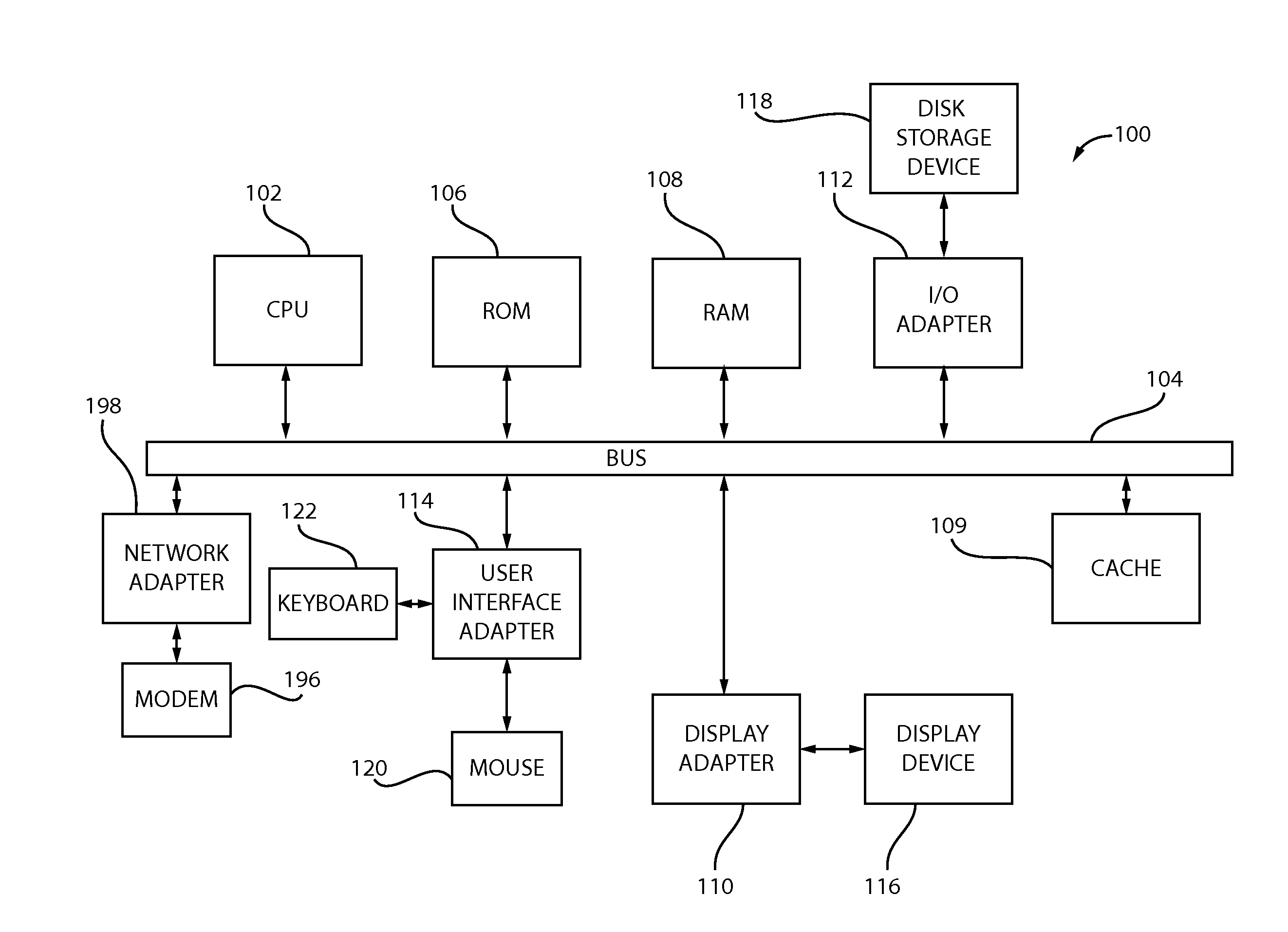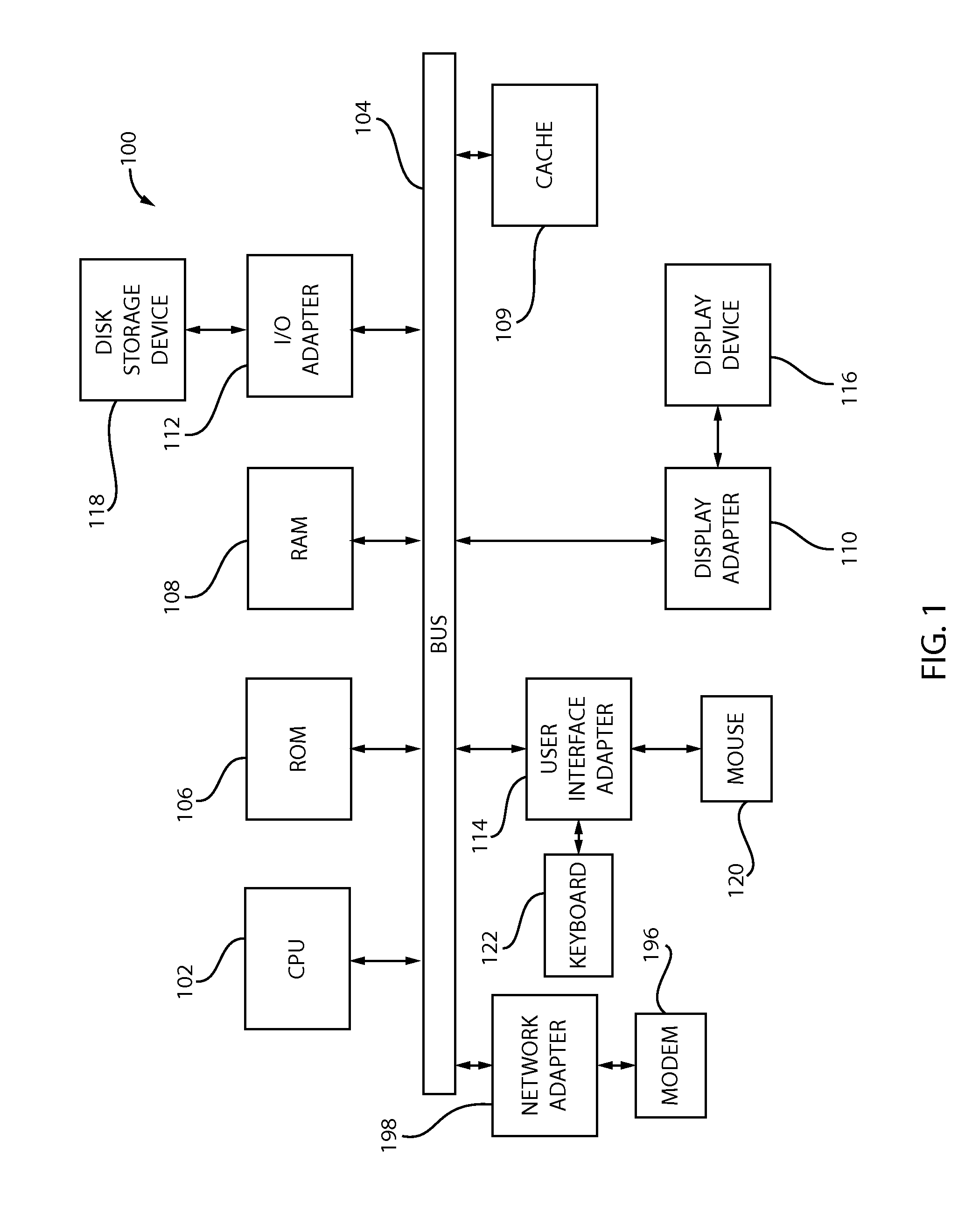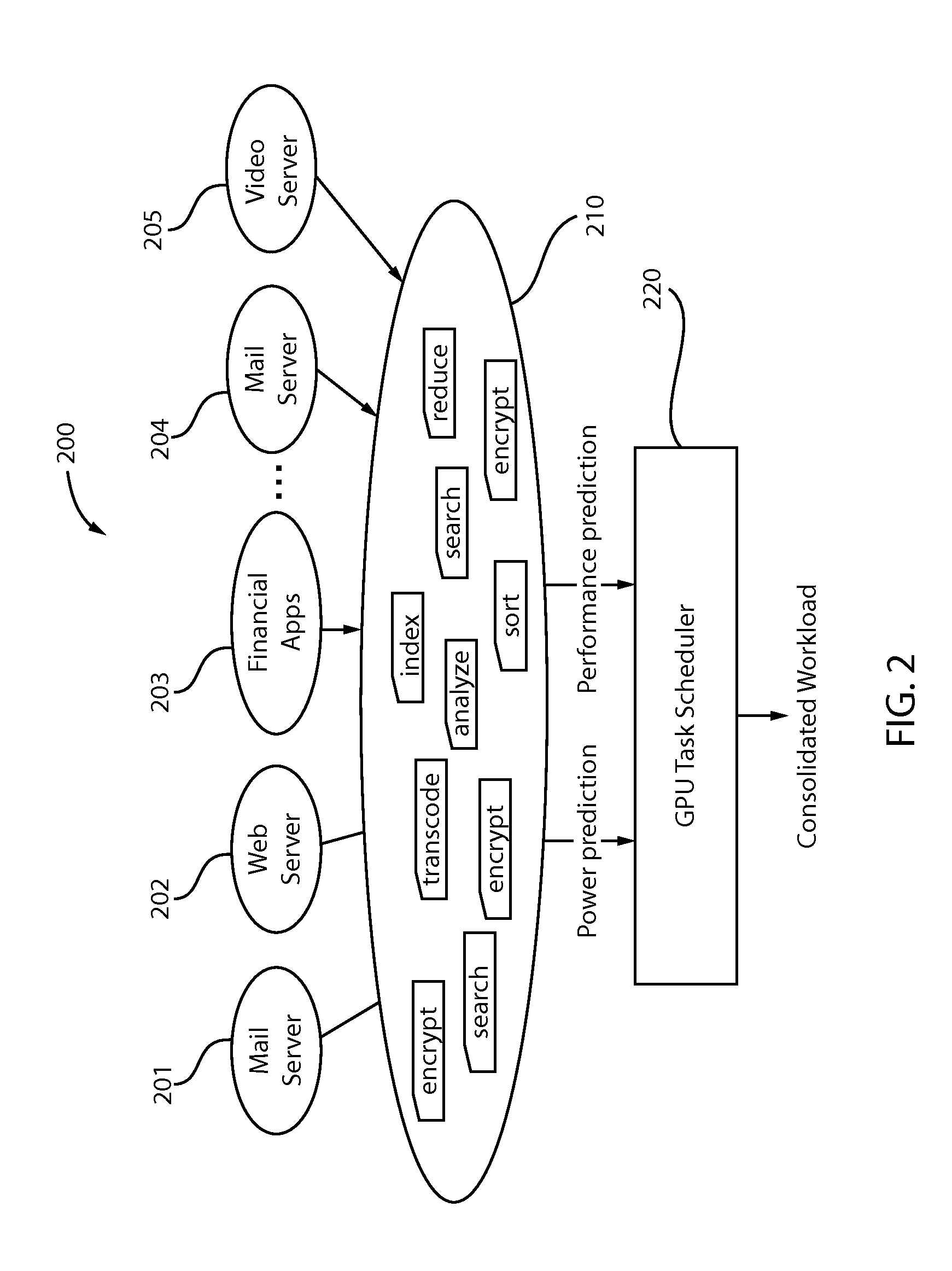Energy-aware task consolidation on graphics processing unit (GPU)
a graphics processing unit and energy-aware technology, applied in the field of graphics processing, can solve the problems of poor performance on the gpu, application speedup is not good on the gpu, and performance is comparable or worse than the cpu,
- Summary
- Abstract
- Description
- Claims
- Application Information
AI Technical Summary
Benefits of technology
Problems solved by technology
Method used
Image
Examples
Embodiment Construction
[0025]As noted above, the present principles are directed to energy-aware task consolidation on a graphics processing unit (GPU).
[0026]Graphics processing units (GPUs) typically achieve high performance when a workload is highly data parallel. However, there are many workloads that do not utilize the full potential of GPU computing and memory resources and perform poorly compared to running them on a multicore CPU. Although the GPU does not provide acceleration for these workloads, and the power consumption of a GPU is much higher than a multicore CPU, we show that new GPU work consolidation strategies that take into account the energy consumption can result in an order of magnitude savings in energy over multicore CPUs. We develop a framework that dynamically consolidates different types of workloads in GPU computation requests into a single GPU workload. However, arbitrary consolidation of GPU workloads does not always lead to better energy efficiency. Work consolidation increases...
PUM
 Login to View More
Login to View More Abstract
Description
Claims
Application Information
 Login to View More
Login to View More - R&D
- Intellectual Property
- Life Sciences
- Materials
- Tech Scout
- Unparalleled Data Quality
- Higher Quality Content
- 60% Fewer Hallucinations
Browse by: Latest US Patents, China's latest patents, Technical Efficacy Thesaurus, Application Domain, Technology Topic, Popular Technical Reports.
© 2025 PatSnap. All rights reserved.Legal|Privacy policy|Modern Slavery Act Transparency Statement|Sitemap|About US| Contact US: help@patsnap.com



